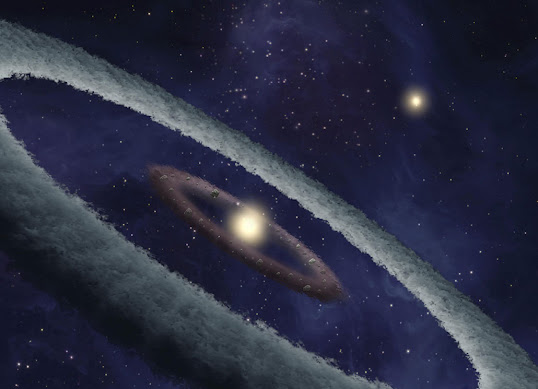The Pebbled Path To Planets
The Pebbled Path To Planets
Astronomers are turning to ‘dust’ and little rocks to figure out how planets form.
Every big planet begins with a pebble.
Okay, not just one. It starts with lots of pebbles — a flat sea of them stretching perhaps hundreds of times wider than the distance from Earth to the sun. Their sizes vary greatly. Some may be mere dust particles. Others may be small to fairly substantial rocks.
These pebbles tumble violently within the gassy disk encircling a young star. Lurking within that disk are the ingredients not only for planets but also for asteroids, comets, and living things. What they become depends not only on those ingredients but also on their location and the temperature of the gas.
Like fussy chefs in a kitchen, astronomers today debate over how much of which ingredients must have been present in that early solar system. And when. And how they might have interacted and combined. And what would happen if you changed their temperature.
We all know how the planet-making process ends. It produces rocky worlds like Earth, Mars, and Venus. It also leads to gas giants like Saturn and ice giants like Uranus. Outside the solar system, the planetary zoo includes stranger worlds. Scientists have spotted a world that they first thought was made of a diamond but now believe has oceans flowing with lava. They’ve observed a hot gas giant where drops of iron probably fall like rain and a small hot planet enshrouded in steam.
“It is just so much fun to work on this,” he says.




i love learning about space and sky . i wish that there may be more facts about space.
ReplyDeletei am sharona
Delete